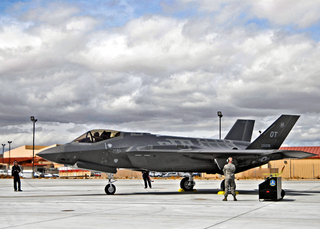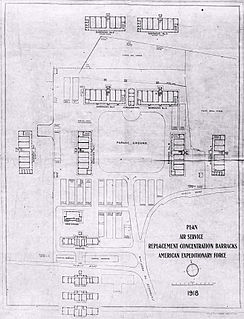
The 72d Air Base Wing is a United States Air Force unit assigned to the Air Force Materiel Command Oklahoma City Air Logistics Center (OC-ALC). It is stationed at Tinker Air Force Base, Oklahoma. The wing is also the host unit at Tinker.

The 70th Intelligence, Surveillance and Reconnaissance Wing is a United States Air Force unit assigned to the Twenty-Fifth Air Force. It is stationed at Fort George G. Meade, Maryland.

The 38th Reconnaissance Squadron is part of the 55th Wing at Offutt Air Force Base, Nebraska. It operates the Boeing RC-135 aircraft conducting reconnaissance missions.

The 512th Rescue Squadron is part of the 58th Special Operations Wing based at Kirtland Air Force Base, New Mexico. It operates UH-1N Twin Huey and HH-60G Pave Hawk aircraft conducting search and rescue missions.

The 6th Reconnaissance Squadron is an active United States Air Force unit, which is currently assigned to the 49th Wing at Holloman Air Force Base, New Mexico.

The 413th Flight Test Squadron is part of the 96th Test Wing and is based at Duke Field, Eglin Air Force Base, Florida. It performs flight testing on C-130 Hercules, CV-22 Osprey, MH-53 Pave Low, UH-1 Iroquois, and HH-60 Pave Hawk aircraft.

The 73d Bombardment Squadron is an inactive United States Air Force unit. It was last assigned to the 4241st Strategic Wing, based at Seymour Johnson Air Force Base, North Carolina. It was inactivated on 15 April 1963.

The 5th Operations Group is an operational component of the United States Air Force 5th Bomb Wing, stationed at Minot Air Force Base, North Dakota. Its mission is to manage and operate B-52H Stratofortress bombers serve as part of the Air Force's conventional and strategic combat force.

The 91st Operations Group is the operational component of the 91st Missile Wing, assigned to the Air Force Global Strike Command Twentieth Air Force. It is stationed at Minot Air Force Base, North Dakota.

The 718th Intelligence Squadron is an intelligence squadron of the United States Air Force based at Langley Air Force Base in Virginia. During the Cold War, it was assigned to the 4128th Strategic Wing, stationed at Amarillo Air Force Base, Texas. It was inactivated on 1 February 1963, and later reactivated in 2011.

The 717th Bombardment Squadron is an inactive United States Air Force unit. Its last was assigned to the 4245th Strategic Wing, stationed at Sheppard Air Force Base, Texas. It was inactivated on 1 February 1963.

The 324th Expeditionary Reconnaissance Squadron is a provisional United States Air Force unit. Its is assigned to the 409th Air Expeditionary Group at Naval Air Station Sigonella, Iitaly.

The 323d Strategic Reconnaissance Squadron is an inactive United States Air Force unit. Its last was assigned to the 91st Strategic Reconnaissance Wing, stationed at Lockbourne Air Force Base, Ohio. It was inactivated on 8 November 1957.

The 60th Expeditionary Reconnaissance Squadron is a provisional United States Air Force unit, assigned to Air Combat Command to activate or inactivate as needed. Its last known activation was as an unmanned aerial vehicle unit, inactivated on 7 October 2015 at Camp Lemonnier, Djibouti.
The 301st Bombardment Squadron is an inactive United States Air Force unit. It was last assigned to the 4135th Strategic Wing. It was inactivated at Eglin Air Force Base, Florida on 1 February 1963.

The 347th Bombardment Squadron is an inactive United States Air Force unit. It was last assigned to the 4047th Strategic Wing. It was inactivated at McCoy Air Force Base, Florida on 1 April 1963.

The 346th Test Squadron is a United States Air Force unit assigned to the 318th Cyberspace Operations Group at Joint Base San Antonio–Lackland, Texas. The squadron tests military cyberspace operation systems.

The 681st Bombardment Squadron is an inactive United States Air Force unit. It was last assigned to the 70th Bombardment Wing. It was last stationed at Little Rock Air Force Base, Arkansas, and was inactivated on 25 June 1962.

The 338th Combat Training Squadron is a United States Air Force unit. It is assigned to the 55th Operations Group, stationed at Offut Air Force Base, Nebraska.
The 52d Bombardment Squadron is an inactive United States Air Force unit. Its last assignment was to the 68th Bombardment Wing, stationed at Chennault Air Force Base, Louisiana.










































